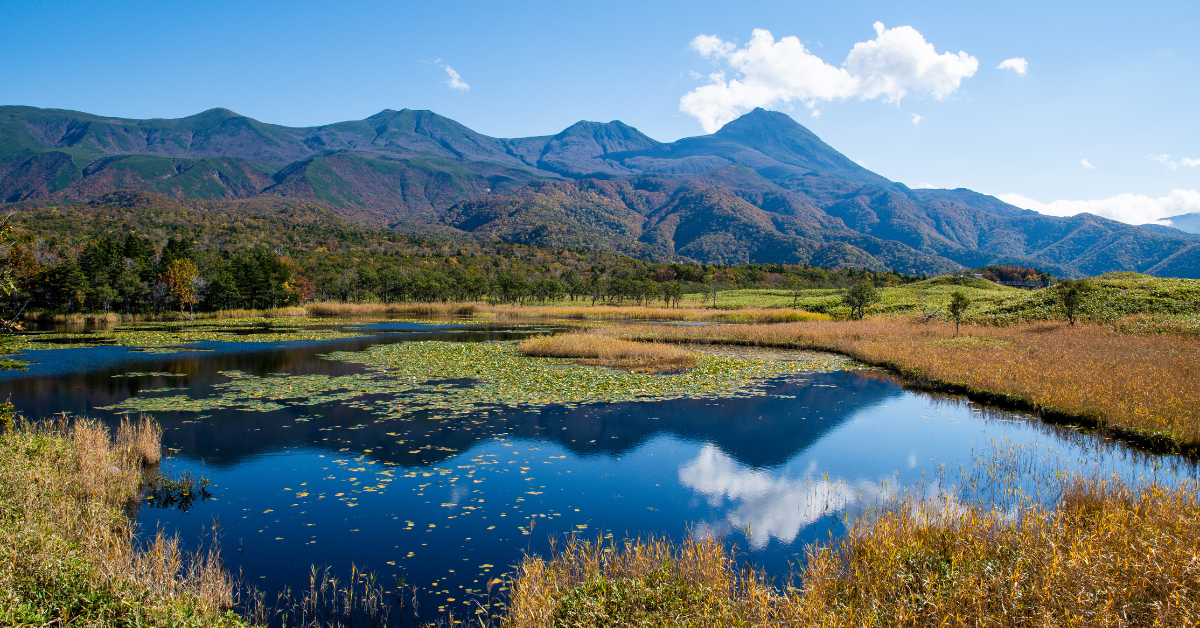Shiretoko, located in northeastern Hokkaido, is a UNESCO World Natural Heritage site that preserves one of Japan’s last untouched wilderness areas. For many Japanese visitors, Shiretoko is “a place where nature’s power feels overwhelming and awe-inspiring.” Their impressions often highlight the balance between beauty and severity, and their experiences offer valuable insights for foreign travelers seeking a deeper understanding of Japan’s relationship with nature.
Japanese Impressions of Shiretoko’s Nature
The most common impression expressed by Japanese visitors is a sense of “overwhelming natural power.” For those living in cities, the vast primeval forests, towering cliffs, and crystal-clear seas feel extraordinary, as though they have stepped into another world. Encounters with wildlife such as brown bears, Ezo deer, and Blakiston’s fish owls are considered once-in-a-lifetime experiences.
Another frequent sentiment is the coexistence of both harshness and beauty in the natural environment. Japanese culture traditionally emphasizes reverence toward nature, and many visitors describe Shiretoko as a place where they strongly feel that “humans are sustained by nature.”
Japanese Impressions of Nature in Shiretoko
| Type of Impression | Content | Example |
|---|---|---|
| Overwhelmed | Astonished by the scale of nature | Primeval forests, cliffs, Sea of Okhotsk |
| Moved | Inspired by wildlife encounters | Brown bears, fish owls |
| Reverence | Awareness of nature’s severity | Drift ice, rough waves, winter cold |
Impressions of Shiretoko’s Four Seasons
Japanese people place great cultural importance on the changing of seasons, and Shiretoko offers distinctly different landscapes and experiences throughout the year.
Shiretoko’s Seasons and Japanese Impressions
| Season | Japanese Impressions | Unique Natural Phenomena |
|---|---|---|
| Spring | “The thaw brings a sense of new life” | Foraging for wild plants, animal activity |
| Summer | “The sea and forests feel most powerful” | Cruises along dramatic cliffs |
| Autumn | “Spectacular blend of salmon migration and autumn leaves” | Salmon swimming upstream |
| Winter | “The drift ice and snowy world feel otherworldly” | Drift ice walking experience |
In spring, the melting snow and fresh greenery inspire a strong sense of renewal. Summer is the peak tourist season, with Shiretoko’s five lakes and boat cruises offering immersive natural experiences. Autumn brings colorful foliage alongside salmon migrating upriver, leaving many visitors moved by this cycle of life. Winter transforms the peninsula into a world of drift ice, where visitors often describe the scenery as both severe and fantastical.
Impressions of Tourist Experiences in Shiretoko
Japanese visitors often describe their activities in Shiretoko as opportunities to learn about “coexistence with nature.” Unique experiences such as drift ice walking and canoeing provide direct encounters with natural forces, with many participants stating they became “memories of a lifetime.”
Shiretoko Tourist Experiences and Japanese Impressions
| Experience | Impressions | Features |
|---|---|---|
| Drift Ice Walk | “An extraordinary, once-in-a-lifetime sensation” | Only possible in winter |
| Shiretoko Five Lakes Walk | “Felt peace and healing in untouched scenery” | Safe with maintained boardwalks |
| Cruise Sightseeing | “Overwhelmed by the cliffs from the sea” | Popular summer activity |
Walking along the Shiretoko Five Lakes boardwalk, many visitors describe feeling “spiritually refreshed”, highlighting how the environment encourages reflection on the importance of protecting nature.
Cultural Impressions of Shiretoko
For Japanese people, Shiretoko’s cultural background is as moving as its natural environment. Knowing that the name derives from the Ainu word meaning “the end of the earth” evokes a sense of deep connection with the land’s indigenous heritage.
Local communities’ commitment to balancing conservation with tourism also leaves a strong impression. Tourists are encouraged to respect rules that protect wildlife and plants, and Japanese visitors often remark that this demonstrates a “beautiful way of living in harmony with nature.”
Cultural Aspects and Japanese Impressions
| Perspective | Impression | Content |
|---|---|---|
| Name Origin | “The meaning ‘end of the earth’ feels profound” | Derived from Ainu language |
| Conservation | “Respect for local efforts” | Balancing tourism with preservation |
| Spirituality | “Learned from the harmonious way of life” | Reverence and coexistence |
Lessons Japanese Visitors Learn in Shiretoko
A common theme in Japanese impressions is a renewed awareness that “humans are part of nature, not its masters.” Shiretoko provides moments of reflection on how people can live respectfully alongside the environment.
Lessons Learned by Japanese in Shiretoko
| Type of Lesson | Content | Example Impressions |
|---|---|---|
| Respect for Nature | Recognition that humans depend on nature | “Felt that we are sustained by nature” |
| Cycle of Life | Realizing the strength of living beings | “Salmon migration was deeply moving” |
| Value of Balance | Importance of protecting while enjoying | “Learned coexistence of people and nature” |
Conclusion
For Japanese people, Shiretoko is a place where they can “experience extraordinary nature with all their senses”, discovering something new with every visit. Their impressions are often summarized in three words: grand, severe, and precious. For foreign travelers, Shiretoko is not just a sightseeing destination but also a gateway to understanding Japanese perspectives on nature and culture. By listening to how Japanese visitors describe Shiretoko, foreign guests can more deeply appreciate its value as a world heritage site.






